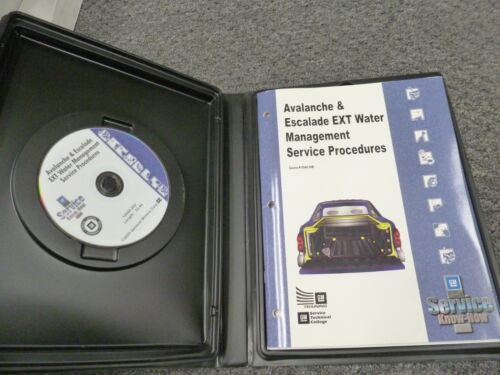Your cart is currently empty!
Tag: Procedures

Preventing Data Loss: The Importance of Regularly Scheduled Backup and Recovery Procedures
In today’s digital age, data is king. Whether it’s customer information, financial records, or important documents, businesses rely on their data to operate efficiently and effectively. However, data loss can occur for a variety of reasons, including hardware failures, human error, malware attacks, or natural disasters. To prevent the devastating consequences of data loss, it is crucial for businesses to implement regularly scheduled backup and recovery procedures.Regularly scheduled backup and recovery procedures involve making copies of data and storing them in a secure location. By doing this on a consistent basis, businesses can protect themselves from the potential loss of valuable information. In the event of a data loss incident, having a recent backup allows businesses to quickly restore their data and resume operations without significant downtime.
There are several key reasons why regularly scheduled backup and recovery procedures are essential for businesses:
1. Protection against data loss: By regularly backing up data, businesses can ensure that they have a recent copy of their information in case of a disaster. This protection is crucial for safeguarding sensitive information and maintaining business continuity.
2. Compliance requirements: Many industries have regulations that require businesses to have backup and recovery procedures in place to protect sensitive data. Failure to comply with these regulations can result in hefty fines and reputational damage.
3. Cost savings: Data loss can be costly for businesses, both in terms of lost revenue and the expenses associated with recovering and restoring data. By investing in regular backup and recovery procedures, businesses can avoid these costs and minimize the impact of data loss incidents.
4. Customer trust: Customers expect businesses to protect their data and privacy. Regularly scheduled backup and recovery procedures demonstrate a commitment to safeguarding customer information and can help build trust and loyalty.
To effectively implement regularly scheduled backup and recovery procedures, businesses should consider the following best practices:
– Establish a backup schedule: Determine how often data should be backed up based on the criticality of the information. For some businesses, daily backups may be necessary, while others may only need weekly or monthly backups.
– Use multiple backup methods: Employ a combination of onsite and offsite backups to ensure redundancy and protect against different types of data loss incidents. Cloud storage solutions can also provide an additional layer of protection.
– Test backups regularly: It’s important to regularly test backups to ensure that they are functioning properly and can be restored in the event of a data loss incident. This can help identify any issues with the backup process and address them before they become a problem.
In conclusion, regularly scheduled backup and recovery procedures are essential for businesses to protect their valuable data and ensure business continuity. By implementing best practices and investing in reliable backup solutions, businesses can minimize the risk of data loss and mitigate the potential impact of a data loss incident. Don’t wait until it’s too late – make backup and recovery a priority for your business today.

The Importance of Regular Data Backup and Recovery Procedures
In today’s digital age, data has become one of the most valuable assets for businesses. From customer information to financial records, companies rely on data to make informed decisions and drive growth. However, with the increasing amount of data being generated and stored, the risk of data loss has also become a major concern.Data loss can occur due to a variety of reasons, including hardware failure, human error, malware attacks, or natural disasters. When data is lost, it can have severe consequences for a business, leading to financial losses, damage to reputation, and even legal implications. This is where regular data backup and recovery procedures play a crucial role.
Data backup involves making copies of data and storing them in a separate location to ensure that it can be recovered in case of data loss. Regular backups help to minimize the impact of data loss by ensuring that a recent copy of the data is always available. This way, even if the original data is compromised, businesses can quickly restore their operations and resume normal activities.
In addition to data backup, having a robust data recovery plan is equally important. Data recovery involves the process of restoring lost or corrupted data from backups. A well-thought-out data recovery plan includes procedures for identifying the cause of data loss, retrieving the backup data, and restoring it to its original state.
There are several benefits to implementing regular data backup and recovery procedures for businesses. Firstly, it provides peace of mind knowing that critical data is safe and secure. Businesses can rest assured that they have a contingency plan in place to deal with any unexpected data loss events.
Secondly, data backup and recovery procedures help to minimize downtime in the event of data loss. By having recent backups available, businesses can quickly recover their data and resume operations, reducing the impact on productivity and revenue.
Lastly, having a data backup and recovery plan in place can help businesses comply with regulatory requirements. Many industries have strict data protection regulations that require businesses to have measures in place to safeguard sensitive information. By implementing data backup and recovery procedures, businesses can demonstrate their commitment to data security and compliance.
In conclusion, the importance of regular data backup and recovery procedures cannot be overstated. Businesses of all sizes should prioritize data protection by implementing robust backup and recovery plans to safeguard their valuable data assets. By doing so, businesses can mitigate the risks of data loss and ensure the continuity of their operations in the face of unforeseen events.

Protecting Your Data: The Benefits of Regular Backup and Recovery Procedures
In today’s digital age, protecting your data is more important than ever. With the increasing threat of cyber attacks, data breaches, and natural disasters, it is crucial for individuals and businesses to have a solid backup and recovery plan in place. Regularly backing up your data and implementing recovery procedures can help ensure that your valuable information remains safe and accessible in case of an unexpected event.One of the main benefits of regularly backing up your data is that it provides a safety net in case of a hardware failure or system crash. If your computer or server were to suddenly stop working, having a recent backup of your data can help you quickly recover and resume normal operations without experiencing significant downtime. This can be especially important for businesses that rely on their data to run their day-to-day operations.
Another benefit of regular backup and recovery procedures is that it can help protect your data from cyber attacks and ransomware. With the rise of cyber threats, it is essential to have a backup of your data in case it becomes compromised or held for ransom. By regularly backing up your data and storing it in a secure location, you can prevent hackers from accessing and destroying your valuable information.
Furthermore, having a backup and recovery plan in place can also help protect your data from natural disasters such as fires, floods, or earthquakes. In the event of a catastrophic event that damages your hardware or destroys your data, having a recent backup can help you quickly recover and restore your information without losing critical data.
In addition to protecting your data, regularly backing up and implementing recovery procedures can also help you comply with data protection regulations and avoid potential fines for non-compliance. Many regulatory bodies require businesses to have a backup and recovery plan in place to protect sensitive information and ensure data security.
Overall, investing in regular backup and recovery procedures is essential for safeguarding your data and ensuring that it remains accessible in case of an unexpected event. By taking proactive steps to protect your information, you can minimize the risk of data loss, downtime, and potential financial loss. So, don’t wait until it’s too late – start implementing a backup and recovery plan today to protect your valuable data.

Medical Office Procedures with Data Disks and Projects CD-ROM – Paperback – GOOD

Medical Office Procedures with Data Disks and Projects CD-ROM – Paperback – GOOD
Price : 4.37
Ends on : N/A
View on eBay
Are you looking for a comprehensive guide on medical office procedures? Look no further than “Medical Office Procedures with Data Disks and Projects CD-ROM”! This paperback book is in good condition and is packed with valuable information on how to efficiently run a medical office.With the included data disks and CD-ROM, you’ll have access to practical projects and resources to help you streamline your office procedures. From scheduling appointments to managing patient records, this book covers it all in a user-friendly format.
Whether you’re a seasoned medical office professional or just starting out in the field, “Medical Office Procedures with Data Disks and Projects CD-ROM” is a must-have resource for anyone looking to enhance their knowledge and skills. Don’t miss out on this valuable tool – grab your copy today!
#Medical #Office #Procedures #Data #Disks #Projects #CDROM #Paperback #GOOD, Data Management
2006 Cadillac Escalade EXT Truck Water Management Service Procedures Manual CD

2006 Cadillac Escalade EXT Truck Water Management Service Procedures Manual CD
Price :279.72– 195.80
Ends on : N/A
View on eBay
Attention all 2006 Cadillac Escalade EXT Truck owners! We are excited to announce the release of the Water Management Service Procedures Manual CD for your vehicle. This comprehensive manual covers everything you need to know about properly managing water in your Escalade EXT Truck.From maintaining proper drainage systems to preventing water leaks, this manual has all the information you need to keep your vehicle in top condition. Whether you’re a DIY enthusiast or a professional mechanic, this CD is a must-have for anyone looking to ensure their Escalade EXT Truck stays in optimal working order.
Don’t wait until water damage occurs – get your hands on the Water Management Service Procedures Manual CD today and take the necessary steps to protect your Cadillac Escalade EXT Truck. Order now and keep your vehicle running smoothly for years to come.
#Cadillac #Escalade #EXT #Truck #Water #Management #Service #Procedures #Manual, Managed Services
2004 Cadillac Escalade EXT Truck Water Management Service Procedures Manual CD

2004 Cadillac Escalade EXT Truck Water Management Service Procedures Manual CD
Price :279.72– 195.80
Ends on : N/A
View on eBay
Looking for the ultimate guide to maintaining your 2004 Cadillac Escalade EXT Truck’s water management system? Look no further than our comprehensive Water Management Service Procedures Manual CD!This manual covers everything you need to know to keep your Escalade’s water management system running smoothly, from routine maintenance tasks to troubleshooting common issues. With easy-to-follow step-by-step instructions and detailed diagrams, you’ll have all the information you need to keep your truck in top condition.
Don’t let water damage ruin your ride – get your hands on the 2004 Cadillac Escalade EXT Truck Water Management Service Procedures Manual CD today and ensure your Escalade stays dry and comfortable no matter what the weather throws at it.
#Cadillac #Escalade #EXT #Truck #Water #Management #Service #Procedures #Manual, Managed Services
2005 Cadillac Escalade EXT Truck Water Management Service Procedures Manual CD

2005 Cadillac Escalade EXT Truck Water Management Service Procedures Manual CD
Price :279.72– 195.80
Ends on : N/A
View on eBay
Are you looking for a comprehensive guide on water management service procedures for your 2005 Cadillac Escalade EXT Truck? Look no further! Our new CD manual is the perfect solution for all your water management needs.This CD manual provides detailed instructions on how to properly manage water in your Cadillac Escalade EXT Truck, ensuring optimal performance and longevity. From draining and refilling coolant to checking for leaks and maintaining proper levels, this manual covers it all.
With easy-to-follow step-by-step instructions and helpful illustrations, this CD manual is a must-have for any 2005 Cadillac Escalade EXT Truck owner. Don’t wait any longer – order your copy today and keep your vehicle running smoothly for years to come.
#Cadillac #Escalade #EXT #Truck #Water #Management #Service #Procedures #Manual, Managed Services
Medicare Prepayment Review: Msp Procedures at Carriers
Price: $15.75
(as of Dec 25,2024 13:08:04 UTC – Details)
Publisher : Bibliogov (July 1, 2012)
Language : English
Paperback : 32 pages
ISBN-10 : 124911098X
ISBN-13 : 978-1249110989
Item Weight : 2.72 ounces
Dimensions : 7.44 x 0.07 x 9.69 inches
Medicare Prepayment Review: MSP Procedures at CarriersMedicare Secondary Payer (MSP) regulations are designed to ensure that Medicare does not pay for medical services that should be covered by another entity, such as a private insurance carrier. As part of the prepayment review process, Medicare carriers are tasked with verifying that payments made by Medicare are appropriate and compliant with MSP rules.
Carriers play a crucial role in identifying and recovering improper payments, as well as preventing future occurrences of improper billing. This involves reviewing claims data, identifying potential MSP situations, and conducting investigations to determine the correct primary payer.
The prepayment review process at carriers typically involves the following steps:
1. Identifying potential MSP situations based on claim data, such as coordination of benefits information and other relevant data points.
2. Conducting thorough investigations to verify the primary payer status and determine if Medicare is the appropriate payer.
3. Requesting additional information or documentation from providers to support claim decisions.
4. Making payment determinations based on MSP rules and guidelines.
5. Communicating with providers and beneficiaries regarding payment decisions and any necessary actions.By effectively implementing MSP procedures at carriers, Medicare can reduce improper payments, recover funds from primary payers, and ensure that beneficiaries receive the appropriate coverage and benefits. This proactive approach helps protect the integrity of the Medicare program and safeguard taxpayer dollars.
Overall, the prepayment review process for MSP procedures at carriers plays a vital role in upholding the principles of fairness and accountability in the Medicare system. It is essential for carriers to diligently follow MSP guidelines and procedures to prevent fraud, waste, and abuse, and ultimately support the sustainability of the program for all beneficiaries.
#Medicare #Prepayment #Review #Msp #Procedures #Carriers, MSP
The Importance of Proper Data Center Troubleshooting Procedures
In today’s digital age, data centers play a crucial role in storing, processing, and managing vast amounts of information for businesses and organizations. With the increasing reliance on data centers, it is essential to have proper troubleshooting procedures in place to ensure the smooth operation and optimal performance of these facilities.Proper data center troubleshooting procedures are essential for identifying and resolving issues that may arise in the data center environment. These procedures help to minimize downtime, prevent data loss, and ensure the security and reliability of the data stored in the center.
One of the key reasons why proper troubleshooting procedures are important is to address issues quickly and effectively. When a problem occurs in a data center, it can have significant consequences for the organization, including loss of revenue, damage to reputation, and potential security breaches. By having a systematic approach to troubleshooting, data center staff can quickly identify the root cause of the issue and implement a solution to resolve it.
Another important aspect of proper troubleshooting procedures is the ability to prevent future issues from occurring. By documenting and analyzing the causes of problems that arise in the data center, staff can identify trends and patterns that may indicate underlying issues with the infrastructure or systems. This proactive approach can help to prevent similar issues from happening in the future, leading to improved reliability and performance of the data center.
Additionally, proper troubleshooting procedures help to ensure that data center staff are well-equipped to handle any issues that may arise. By having clear guidelines and protocols in place, staff can quickly and confidently respond to problems, minimizing the impact on the organization. This also helps to improve the overall efficiency and effectiveness of the data center operations.
In conclusion, proper data center troubleshooting procedures are essential for maintaining the smooth operation and optimal performance of data centers. By having a systematic approach to troubleshooting, organizations can quickly identify and resolve issues, prevent future problems, and ensure the security and reliability of the data stored in the center. Investing in proper troubleshooting procedures is a crucial step in ensuring the success and longevity of data center operations.

Emergency Preparedness in the Data Center: Safety Procedures and Plans
In today’s digital age, data centers play a crucial role in storing and processing vast amounts of information for businesses and organizations. As such, it is essential to have emergency preparedness plans in place to ensure the safety of both employees and the valuable data housed in these facilities.Data centers are vulnerable to a variety of emergencies, including power outages, fires, natural disasters, and cybersecurity threats. Therefore, it is imperative for data center operators to have comprehensive safety procedures and plans in place to mitigate these risks and minimize potential damage.
One of the most important aspects of emergency preparedness in a data center is having a well-defined evacuation plan. This plan should outline clear evacuation routes, assembly points, and communication procedures to ensure that all employees can evacuate the facility safely in the event of an emergency. Regular drills and training sessions should also be conducted to ensure that employees are familiar with the evacuation procedures and can respond quickly and effectively in an emergency situation.
In addition to evacuation procedures, data centers should also have robust fire safety measures in place. This includes regular maintenance of fire detection and suppression systems, as well as proper storage and handling of flammable materials. Employees should be trained in fire safety protocols, including how to use fire extinguishers and safely evacuate the building in the event of a fire.
Data centers are also vulnerable to power outages, which can have serious implications for both the facility and the data stored within it. To mitigate the risk of power outages, data centers should have backup power systems in place, such as uninterruptible power supplies (UPS) and generators. Regular testing and maintenance of these systems is essential to ensure that they will function properly in the event of a power outage.
Natural disasters, such as hurricanes, earthquakes, and floods, can also pose a significant threat to data centers. Data center operators should have contingency plans in place to protect the facility from these types of disasters, including measures to secure the building, backup data offsite, and ensure the safety of employees.
Finally, data centers should also have a comprehensive cybersecurity plan in place to protect against cyber threats, such as hacking and malware attacks. This includes regular monitoring of network traffic, implementing strong security measures, and conducting regular security audits to identify and address vulnerabilities.
In conclusion, emergency preparedness is essential for ensuring the safety and security of data centers. By having comprehensive safety procedures and plans in place, data center operators can mitigate risks, protect valuable data, and ensure the safety of employees in the event of an emergency. Regular training, testing, and maintenance of emergency preparedness measures are essential to ensure that data centers can effectively respond to any emergency situation that may arise.
